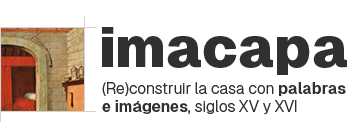
Increasingly accurate methodologies are being used to study housing. Moreover, the subject is being researched across various disciplines, including ethnology and anthropology, that is, far from the folkloric premises that dominated the field for decades. The latter were based on the knowledge of the "traditional" house, and the objective was to determine the "typical" identity of a place. Spanish historiography does indeed still embrace three monodisciplinary approaches to housing: first, from a formal perspective; second, considering the furnishings and items contained in a house; and third, based on the life stories unfolding within the homes.
The present proposal brings together these historiographical trajectories and the research we have accomplished so far. It addresses the methodological need to build a combined and in-depth understanding of Hispanic fifteenth and sixteenth-century housing: architecture, spatial distribution, family links, belongings, emotional experiences, and the gender dimension. We must also consider the fact that the complex society of the period encompassed houses belonging to Christians, Moors, Jews and conversos.
The project participants have made some advances in a number of these dimensions, but we detected a historiographical gap: the concise and specialised definition of the multiple parts of houses and their furnishings. For this reason, the aim is to deepen our housing knowledge by accurately naming and identifying each architectural element and furnishings using the specific terminology of the time. The goal is to produce a scientific and digital reconstruction that unites spaces and objects, situating them into their conceptual sphere, taking gender and cultural origin into account, and calling the house objects by the name that was truly used at the time. To do this, we will employ two essential and complementary sources of information: words and images.